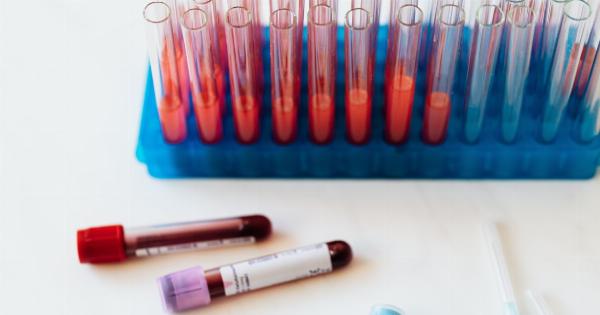Mental health is a critical aspect of overall well-being. It is crucial to address and understand any potential mental health issues in order to promote a healthy and fulfilling life.
With advancements in technology, video tests have emerged as a valuable tool in analyzing and assessing mental health. This article explores the benefits and significance of video tests in mental health analysis.
Understanding Mental Health
Mental health refers to a person’s emotional, psychological, and social well-being. It affects how individuals think, feel, and act, determining how they handle stress, make choices, and relate to others.
Good mental health is essential for functioning, personal satisfaction, and contributing to society.
Mental health disorders are common worldwide, with millions of individuals experiencing some form of mental illness. These disorders can range from anxiety and depression to more severe conditions such as schizophrenia and bipolar disorder.
Timely diagnosis and treatment are crucial to effectively address mental health issues.
The Role of Video Tests in Mental Health Analysis
Video tests have gained recognition as a valuable tool for mental health analysis due to their ability to provide objective and comprehensive assessments.
These tests involve recording individuals’ behavioral responses and emotions in various scenarios, creating a visual record for analysis. Here are some key benefits of using video tests:.
1. Objective Evaluation
Video tests eliminate the possibility of subjective interpretations by allowing mental health professionals to review and analyze actual footage of a person’s behavior.
This provides a more objective evaluation, enabling accurate assessments and diagnoses. Subjective biases, which are often present in traditional evaluation methods, can be minimized with the use of video tests.
2. Comprehensive Assessment
Video tests provide a comprehensive assessment of an individual’s mental health.
By recording their reactions and behaviors in various scenarios, mental health professionals can gain better insights into their emotional stability, social interactions, and cognitive abilities. This holistic approach ensures a more accurate understanding of an individual’s mental well-being.
3. Remote Analysis
Video tests offer the advantage of remote analysis, allowing mental health professionals to evaluate patients without geographical limitations.
This is particularly beneficial for individuals residing in remote areas or those who face difficulties in accessing mental health services. Through video tests, experts can assess their patients’ mental health remotely, ensuring timely support and intervention.
4. Time Efficiency
Video tests significantly reduce the time required for mental health analysis. In traditional assessments, professionals often need multiple in-person sessions to observe and evaluate a patient’s behavior.
However, video tests allow for efficient analysis as mental health professionals can review recorded footage at their convenience, saving time for both parties involved.
5. Increased Accuracy
Video tests have proven to enhance the accuracy of mental health analysis. By closely examining recorded behavior and emotional responses, mental health professionals can identify subtle indicators that may not be evident during traditional evaluations.
This increased accuracy leads to more targeted treatment plans and better outcomes for individuals experiencing mental health issues.
6. Research and Training
Video tests play a crucial role in mental health research and training. Researchers can utilize video recordings to study patterns, identify trends, and develop a deeper understanding of various mental health conditions.
Additionally, mental health professionals in training can benefit from reviewing video tests to enhance their diagnostic skills and gain exposure to different scenarios.
Video Test Techniques for Mental Health Analysis
Several video test techniques are commonly used in mental health analysis. These techniques focus on capturing specific aspects of an individual’s mental well-being. Here are some widely used video test techniques:.
1. Facial Expression Analysis
Facial expression analysis captures a person’s facial emotions and changes in response to various stimuli.
By analyzing facial expressions, mental health professionals can assess emotional responses, mood instability, and potential signs of depression or anxiety.
2. Behavioral Coding
Behavioral coding involves categorizing and scoring specific behaviors displayed by individuals during video tests.
This technique helps identify patterns and provides insights into social interactions, cognitive abilities, and behavioral anomalies that may indicate mental health issues.
3. Virtual Reality Experiments
Virtual reality experiments create simulated environments for individuals to experience and react to controlled stimuli.
These tests provide a more realistic scenario, allowing mental health professionals to observe behavior and emotional responses in highly controlled settings.
4. Eye Tracking
Eye tracking techniques monitor the movement and focus of an individual’s eyes during video tests. This analysis can reveal attention deficits, cognitive impairments, or potential signs of neurological disorders that may impact mental health.
5. Narrative Analysis
Narrative analysis involves examining the stories and descriptions provided by individuals during video tests.
This technique provides insights into thought processes, perception, and potential cognitive distortions, leading to a more comprehensive understanding of their mental state.
Future Implications of Video Tests in Mental Health Analysis
The use of video tests in mental health analysis is likely to expand significantly in the future, transforming the way mental health is diagnosed and treated. Here are some potential future implications:.
1. Enhanced Accessibility
Video tests can serve as a medium to enhance accessibility to mental health services.
With the advancements in technology, individuals will have the ability to record and share video tests from the comfort of their homes, allowing mental health professionals to provide remote assessments and interventions without geographical constraints.
2. Personalized Treatment Plans
Video tests can enable mental health professionals to develop personalized treatment plans based on individual responses and behaviors.
Analyzing the recorded footage, experts can tailor interventions specific to an individual’s needs, increasing the effectiveness of treatment and improving outcomes.
3. Early Intervention
Video tests have the potential to facilitate early intervention for mental health issues.
By detecting subtle signs and changes through video analysis, mental health professionals can intervene at an earlier stage, preventing the progression of mental health disorders and maximizing the chances of successful treatment.
4. Big Data Analysis
The collection of video tests on a larger scale can contribute to big data analysis in mental health. Researchers can analyze vast amounts of video data to identify patterns, risk factors, and effective interventions.
This data-driven approach has the potential to advance our understanding of mental health and lead to more targeted interventions.
Conclusion
Video tests have emerged as a valuable tool in the analysis of mental health.
With their objective evaluation, comprehensive assessment, remote analysis capabilities, and increased accuracy, video tests offer numerous advantages for mental health professionals and individuals seeking help. As technology continues to advance, the future implications of video tests in mental health analysis are promising.
Their potential to enhance accessibility, personalize treatment plans, enable early intervention, and contribute to big data analysis holds immense possibilities for improving mental health services globally.






























